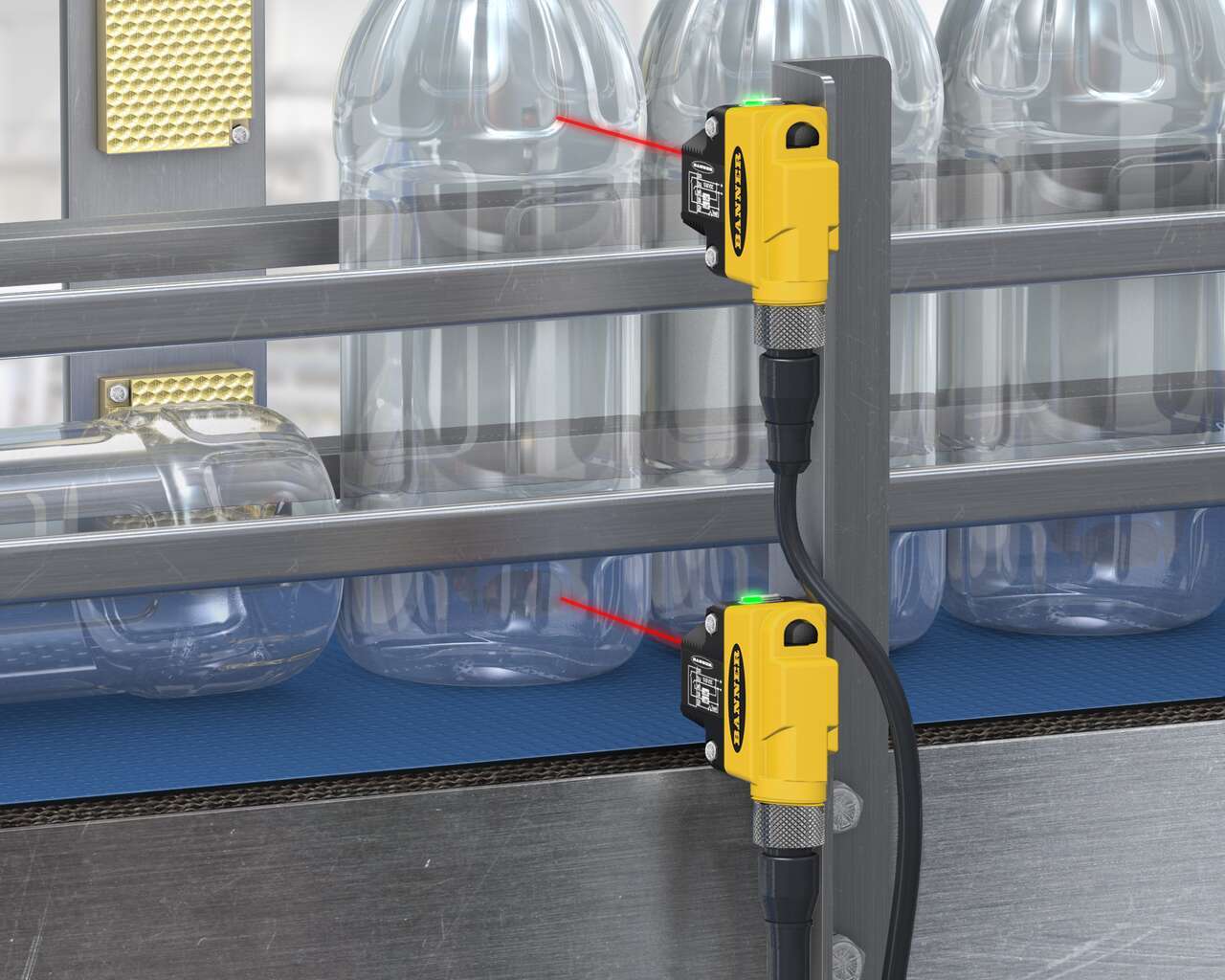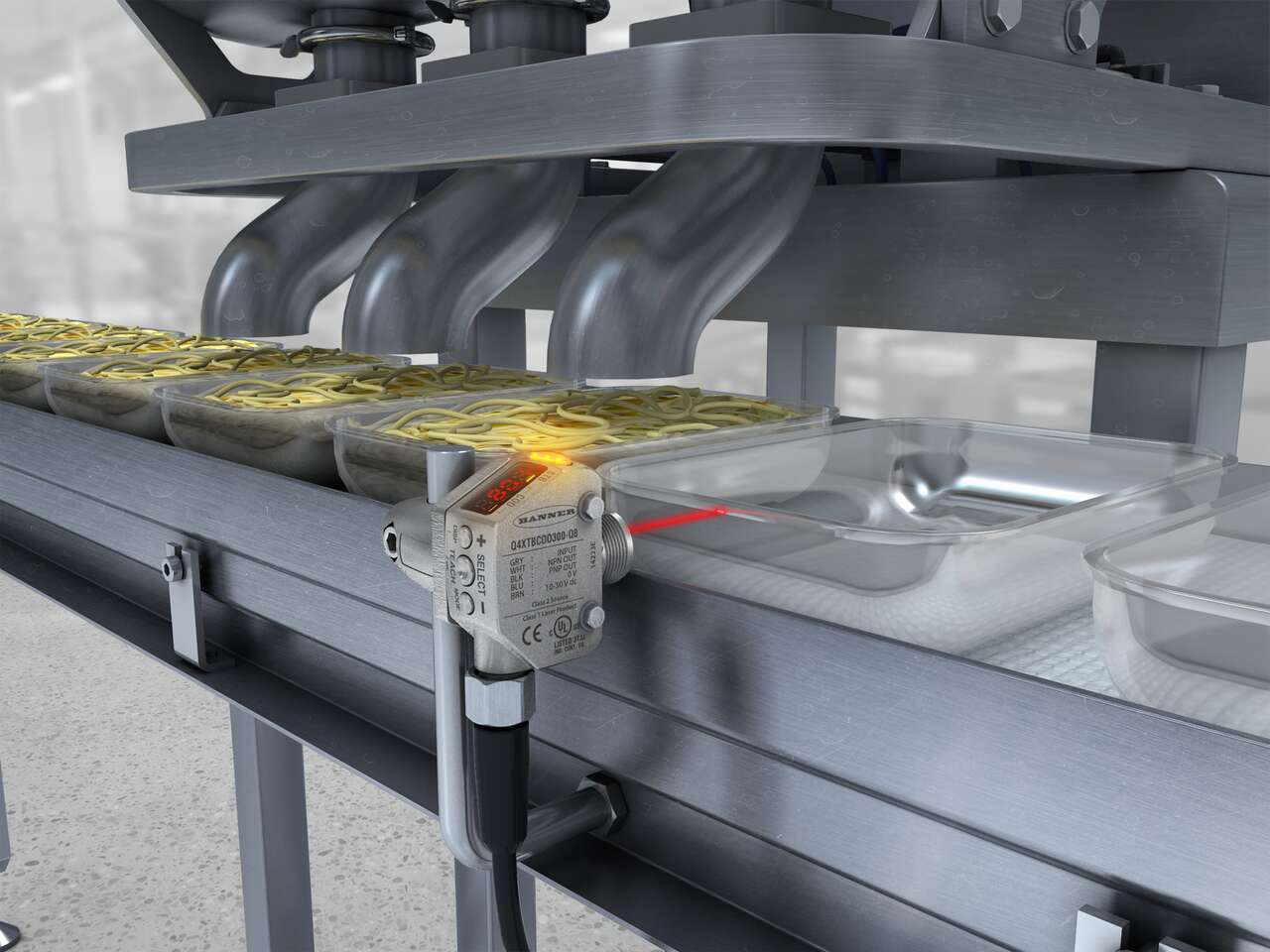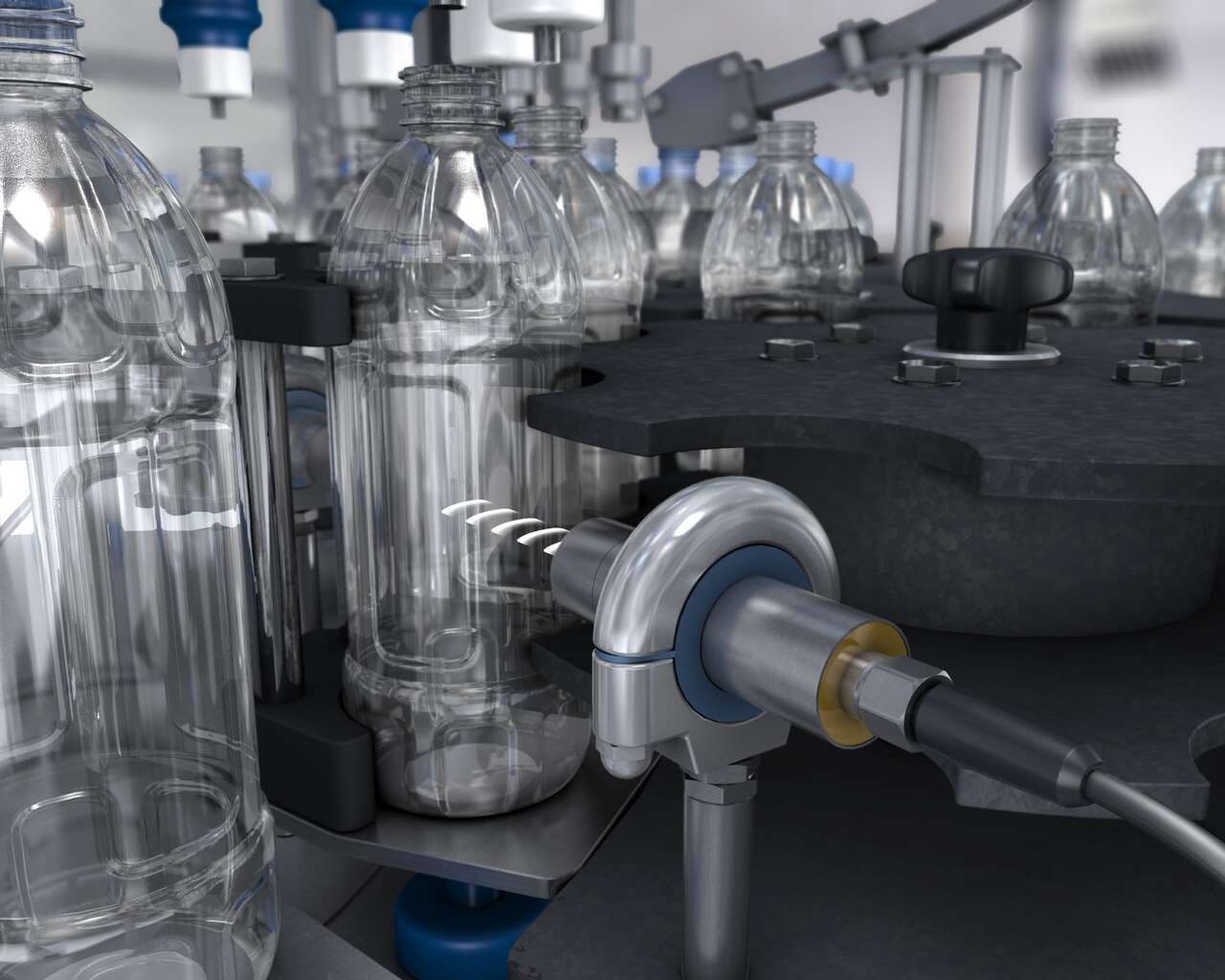How to Choose the Best Type of Sensor for Clear Object Detection

Summary: Clear objects can be challenging to detect because they allow light to pass through them. Some sensing technologies may work better in certain conditions or may be more effective with certain materials.
This article compares three types of sensor technologies frequently used for clear object detection: LED-based sensors, laser-based sensors, and ultrasonic sensors. Learn how each technology works to detect transparent objects and how to choose the right technology for your application.
LED-Based Photoelectric Sensors
Retro-reflective sensors are the most commonly used LED-based photoelectric sensor in clear object detection applications. Each sensor houses an emitter and a receiver. The emitter directs a beam of light to a reflector which redirects the light beam back to the receiver. An object passing between the sensor and reflector will either block or attenuate a perceivable percentage of the emitted light.
How LED-Based Photoelectric Sensors Detect Clear Objects
Retro-reflective photoelectric sensors with a coaxial optical design emit and receive light along a single narrow axis. This optimizes the detection of transparent objects by dramatically reducing the risk of false detection from reflected light. Sensors using this technology will have a small bright spot that simplifies sensor alignment and enables very precise leading edge detection.
Additionally, because light emitted and received travels on a single narrow beam, these sensors can see through a small aperture, allowing them to be shielded for use in washdown and hygienic environments. Photoelectric sensors with polarizing filters will emit and detect light waves of a specific polarization, ignoring all other light waves. This further reduces the risk of false detection caused by reflected light. Learn more about polarized coaxial optics for detecting transparent objects.
Advantages
Photoelectric sensors have faster response speeds, longer sensing ranges, and higher levels of precision than ultrasonic sensors. LED-based sensors are very effective for general use detecting larger object and largers gaps between objects (compared to laser-based sensors).
Laser-Based Sensors
A laser-based sensor is another option for detecting clear objects. A laser-based sensor operates with a laser instead of an LED, allowing for easier alignment, greater precision, detection of smaller objects, and detection of smaller gaps compared to an LED-based sensor. Some laser-based sensors, like the Q4X from Banner Engineering, also do not require a retro-reflector or receiving unit.
How Laser-Based Sensors Detect Clear Objects
In addition to measuring distance, laser sensors with dual mode capability can also detect changes in light intensity from a stable background condition. In other words, a laser distance sensor with dual mode can detect not only when the target is present within a certain distance but also when it returns a certain amount of light to the receiver.
For this to work, a stable reference surface must be taught, and the distance and intensity of the reference surface are recorded and used as a baseline. The presence of a transparent object entering the sensing range of the beam alters the perceived distance and light intensity from the background condition.
Advantages
Laser-based sensors provide a highly visible laser spot for easy alignment, and a small laser spot ensures greater precision for detection of small objects. A laser-based sensor that does not require a reflector allows for more flexible mounting as well as reduced inventory and maintenance costs.
Ultrasonic Sensors
Ultrasonic sensors use sound waves to detect objects. Most ultrasonic sensors detect objects and measure distance by listening for the return echo of an emitted sound wave reflecting off of a target or background condition.
Opposed mode ultrasonic sensors, like the M25U from Banner Engineering, detect an object whenever the signal between the emitter and receiver is blocked. These sensors are faster and provide greater levels of precision than most ultrasonic sensors.
How Ultrasonic Sensors Detect Clear Objects
Because ultrasonic sensors utilize sound rather than light for detection, they are not susceptible to many of the conditions which typically challenge optical sensors.
Advantages
Ultrasonic sensors are immune to target color, reflectivity, and transparency, which simplifies product changeover and reduces downtime. Additionally, they are unaffected by area light conditions and perform well in dirty and wet environments.
For more information about clear object detection, contact one of our experts or sign up below to receive future updates.
Featured Products
Related Articles

How to Choose the Best Sensor for Clear Object Detection
Understand the differences between common sensor types in Clear Object Detection applications, such as ultrasonic vs. photoelectic retroreflective sensors.

3 Solutions for Semiconductor Wafer Presence Detection
See 3 solutions to reliably detect clear and reflective semiconductor wafers in a vacuum chamber.

Why Use Polarized Coaxial Optics For Detecting Clear Objects
Clear object detection sensors are sensitive to variations in light and benefit from polarized coaxial optical design to reduce false detection from reflected light.





